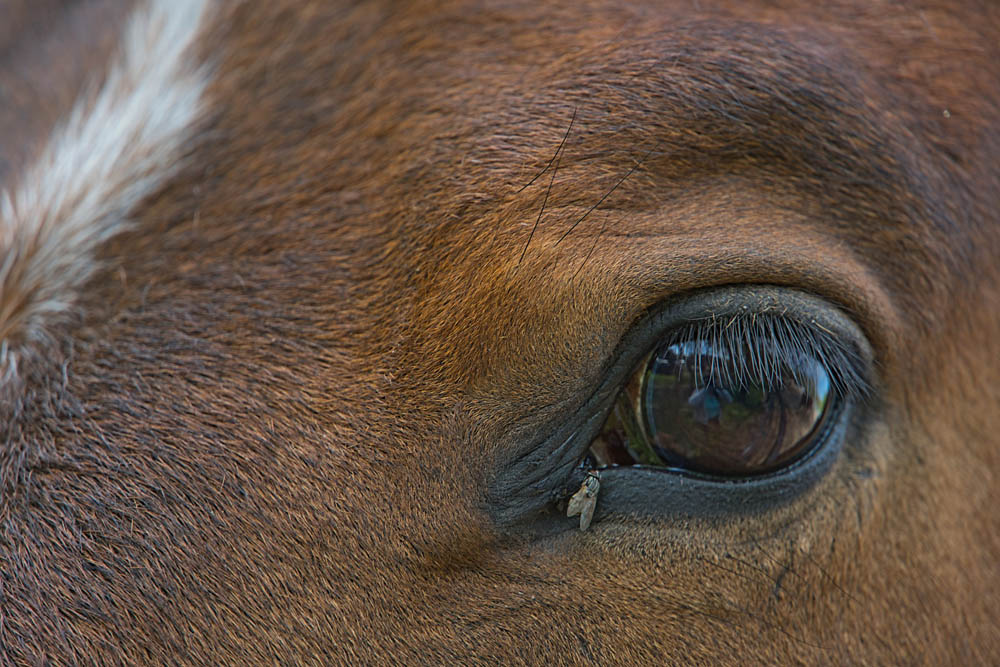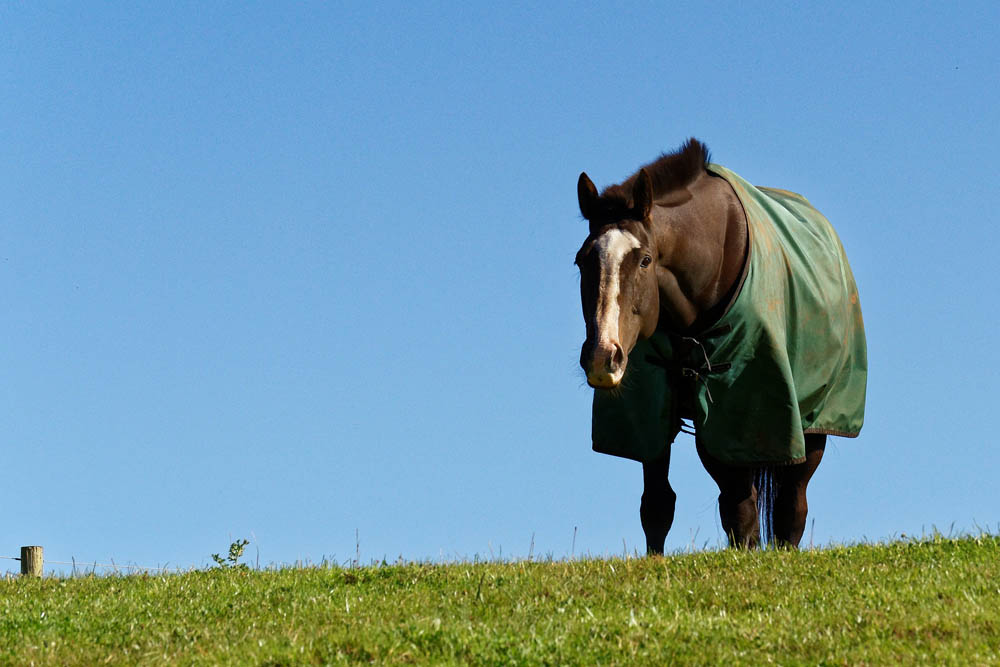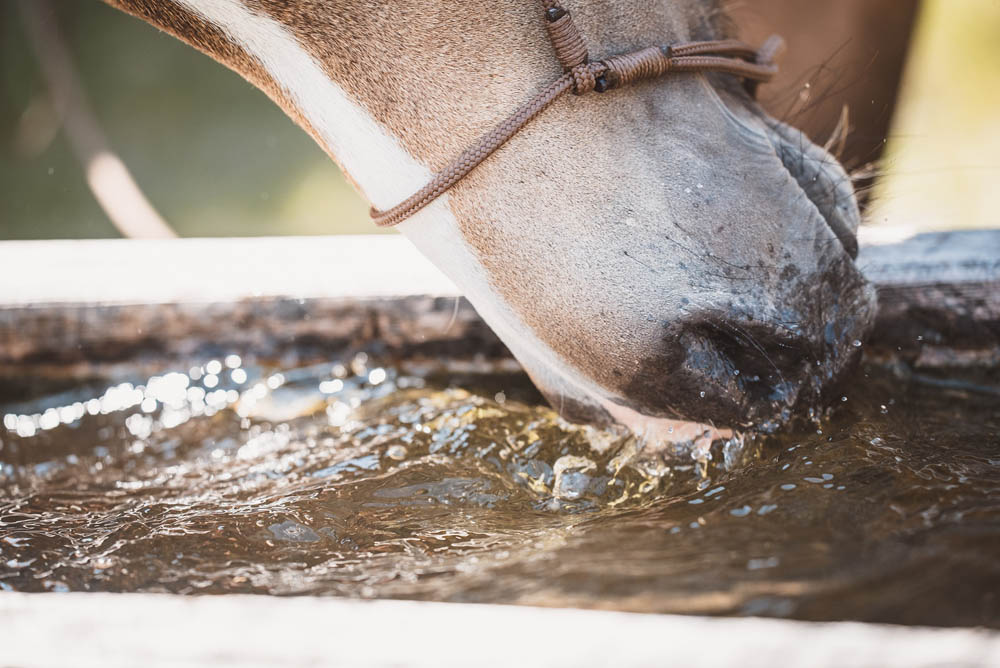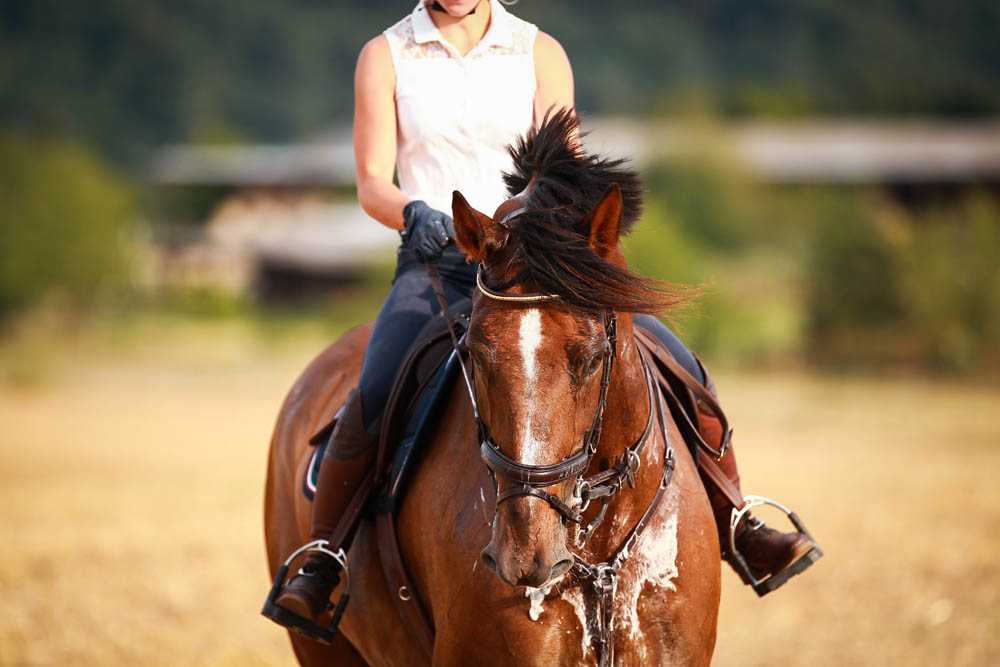Spring is a period of change in Australia. As the weather continues to warm, there are a number of ways we can ensure our horses are in peak health come summer — from paddock management, parasite control and insect protection, through to rugging, good hydration and ensuring we’re equipped to identify the signs of heat stress.

With spring well and truly in full swing, now is the time to prepare our horses for the warmer months ahead. Here, we cover six ways you can help to ensure your horse will be happy and healthy for summer.
1. KEEP AN EYE ON GRASS GROWTH
Late spring into early summer is a period of transition for pasture where lush spring growth begins to mature, before eventually going to seed and browning off. Mature pasture is safer for horses prone to laminitis and metabolic issues, as it contains a lower level of non-structural carbohydrates (NSC) in comparison to fresh spring growth. Grasses store energy in the lower parts of the plant, so when pasture begins producing longer stems and seed heads, it’s generally considered safer for at-risk horses.
However, just because we are midway through spring doesn’t mean it is time to open the gate and throw away the grazing muzzle completely. Rain events in late spring and early summer still have the potential to bring about a flush of fresh, green undergrowth that can create issues — so be sure to monitor pasture carefully during this period and manage at-risk horses accordingly.
2. WORM ACCORDING TO THE SEASON… AND THE SITUATION
Transitioning from spring to summer sees a change in the types of worms your horse is likely to be exposed to. When we head into late spring, strongyle larvae will have matured (if not treated in the larval stage) and tapeworm is also common.
The current best practice is to perform three to four faecal egg count (FEC) tests per year to ascertain whether your horse is at risk of parasite-related disease. If a FEC shows worming is required, you will need to treat your horse with an effective all-wormer such as Strategy T (pyrantel and oxfendazole) or Equimax (abamectin and praziquantel). It’s also important to undertake a faecal egg count resistance test (FECRT) once per year to identify any worm resistance that may be occurring on your property, as this will provide you with an indication of which type of wormer you are best to use.

Summer sores — a skin condition caused by the larvae of Habronema and Draschia worms — can also pose an issue for some horses during the warmer months. Habronema and Draschia worms begin their life cycle when eggs are excreted in your horse’s manure. The eggs become larvae, and are often carried by flies to your horse’s mouth where they are swallowed and grow into adult worms inside the stomach. However, in some cases the larvae land on other areas of your horse’s body and cannot enter the stomach; summer sores may occur when larvae are deposited on compromised skin or mucous membranes, such as the site of an injury or irritation. As the larvae cannot enter your horse’s system, they cause a severe local inflammatory reaction that results in swelling, ulceration, redness and itching. These rapidly growing lesions are summer sores and often require veterinary care. If your horse has summer sores, a single treatment using a broad-spectrum wormer such as Equimax is advisable.
Back on the topic of pasture, summer is a good time to reduce the number of worm eggs and larvae in your paddock and disrupt the life cycle of these parasites. High temperatures and dryness are fatal to most worm eggs and larvae, so harrowing paddocks to break up manure (if it’s not being removed), followed by 2-3 weeks of spelling in hot weather, will dramatically reduce the level of pasture contamination. With warmer weather now on the horizon, it’s time to think about scheduling in your “worm circuit breaker”. You can read more about good pasture management in the July issue of Equestrian Life.

3. FLIES AND OTHER INSECTS
Some horses can tolerate flying insects, while others can’t stand them. Warmer months often bring along insects that can worry and bite horses, especially in the humid, coastal regions of Australia. Insects can lead to ongoing annoyance, weight loss, and localised or widespread skin diseases. Bites and stings can cause a wound large enough to ooze serum and predispose the horse to secondary bacterial infections. In regions with high insect numbers, light body and neck rugs as well as fly hoods can be used for protection.
An insecticidal spray such as Flyaway can be used on the horse or in stables to provide sustained protection. If the skin is broken and there is an open wound, applying an antiseptic cream such as Septicide or a spray such as Cetrigen, both of which contain insect repellent, is an effective way to help prevent infection and further irritation.


4. GO EASY ON THE RUGGING
As the weather warms, it is important to make sure you’re adjusting your horse’s rugs accordingly — in other words, it’s time to take some layers off.
A horse’s thermoneutral zone is 5-25 degrees Celsius, which is quite different to a human’s; just because you feel cold doesn’t mean your horse does! In most parts of Australia, it rarely drops below 5 degrees as summer approaches, so apart from the occasional very clear, chilly night, your horse is unlikely to need any substantial rugging. Lightweight summer sheets should be all that’s required, and perhaps a light waterproof rain sheet — such as an unfilled synthetic or unlined canvas rug — could be used during prolonged periods of rain, especially where sufficient paddock shelter isn’t available.


5. STAY HYDRATED
Depending on where you are located in Australia, you may already be starting to see some pretty warm weather by late spring. It goes without saying that horses should always have unlimited access to fresh, clean water — however, horses in heavy work may need more than that alone.
About 75-80% of the energy used by the horse’s body is given off as heat, which is mainly lost through evaporation of sweat or evaporative cooling from the respiratory tract. Exercising horses can lose up to 10-15 litres of sweat per hour, depleting the horse of not only fluid, but also key salts such as sodium, potassium, chloride, calcium and magnesium. Horses ridden occasionally should be able to replace their body salt losses from pasture and a salt lick in their paddock. However, horses that are exercised and sweat freely on a regular basis should receive an electrolyte supplement such as Humidimix, Recharge or Bectyl.


6. KNOW THE SIGNS OF HEAT STRESS

Horses that are worked during hot weather, especially if the humidity is high, can suffer from heat stress. Horses that are unconditioned, overweight or dehydrated are most susceptible. Signs of heat stress include muscle weakness, rapid breathing and panting, an elevated heart rate and depression. Heat stress is an emergency and immediate steps must be taken to reduce the internal body temperature of the horse. You can read a comprehensive article on identifying and managing heat stress in the January issue of Equestrian Life. EQ
This article was written in conjunction with Virbac.

